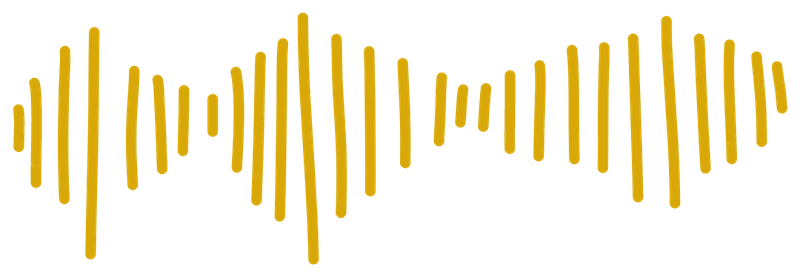The Best Podcasting Microphones for 2026
Updated on Dec. 9, 2025
In this post, we're sharing our top picks for the best podcasting microphones. But first, let's look at the different types. Microphones can seem confusing with all the technical terms. We'll break down each type and explain their differences in simple words.
Let's get started!
Overview
Considerations
Dynamic vs Condenser vs Ribbon
- Dynamic microphones are the most durable and easy to use. They don’t need external power and handle background noise well, which makes them great for home setups or places that aren’t perfectly quiet.
- Condenser microphones are more sensitive and capture more detail, which is great for professional studio recordings. However, they pick up more background noise and need phantom power from an audio interface or mixer.
- Ribbon microphones have a warm, vintage sound but are delicate and expensive. They are not common in podcasting, more common in music, but some professionals like them for their natural sound.
Cardioid vs Omnidirectional vs Bi-directional
- Cardioid microphones pick up sound mostly from the front while reducing noise from the sides and back. This makes them the best choice for solo podcasting.
- Omnidirectional microphones capture sound from all directions, so they work well for group recordings where multiple people are speaking. However, they also pick up background noise, so they’re not ideal for noisy rooms.
- Bi-directional microphones (also called figure-8) capture sound from the front and back but reject sound from the sides. These are great for interviews where two people are sitting across from each other.
USB vs XLR vs Lightning
-
USB microphones are the easiest to use. Just plug them into your computer, and you’re ready to record. They have a built-in audio interface, so you don’t need extra equipment. Perfect for beginners.
-
XLR microphones are what professionals use. They offer better sound quality, but you’ll need an audio interface or mixer to connect them.
Read more about the audio interface in our article Podcast Essentials: 5 Things You Need to Start a Podcast
-
Lightning microphones are made for Apple devices like iPhones and iPads. They’re useful if you want to record on the go, but they don’t offer the same quality as XLR or high-end USB mics.
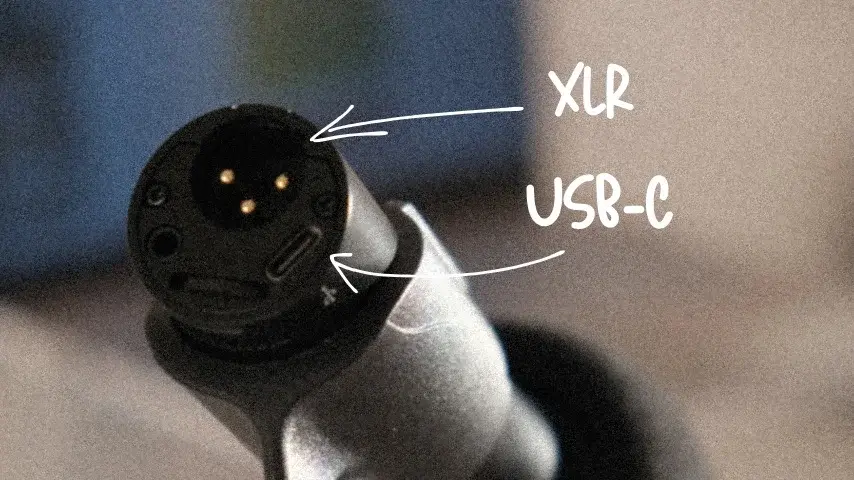
Wired vs Wireless vs Lavalier
- Wired microphones give you the most stable connection and best sound quality. No batteries, no interference, just plug in and record.
- Wireless microphones let you move around freely, which is great if you record video podcasts or need flexibility. The downside is that they can have slight delays or interference, and they need batteries or charging. Therefore they are generally not recommended for podcasting.
- Lavalier microphones are small, clip-on mics often used for video podcast recordings or interviews. They keep your hands free and work well for recording in different locations, but their sound quality is usually not as good as a proper handheld or studio mic.
Best Podcasting Microphones
1. Shure SM7b
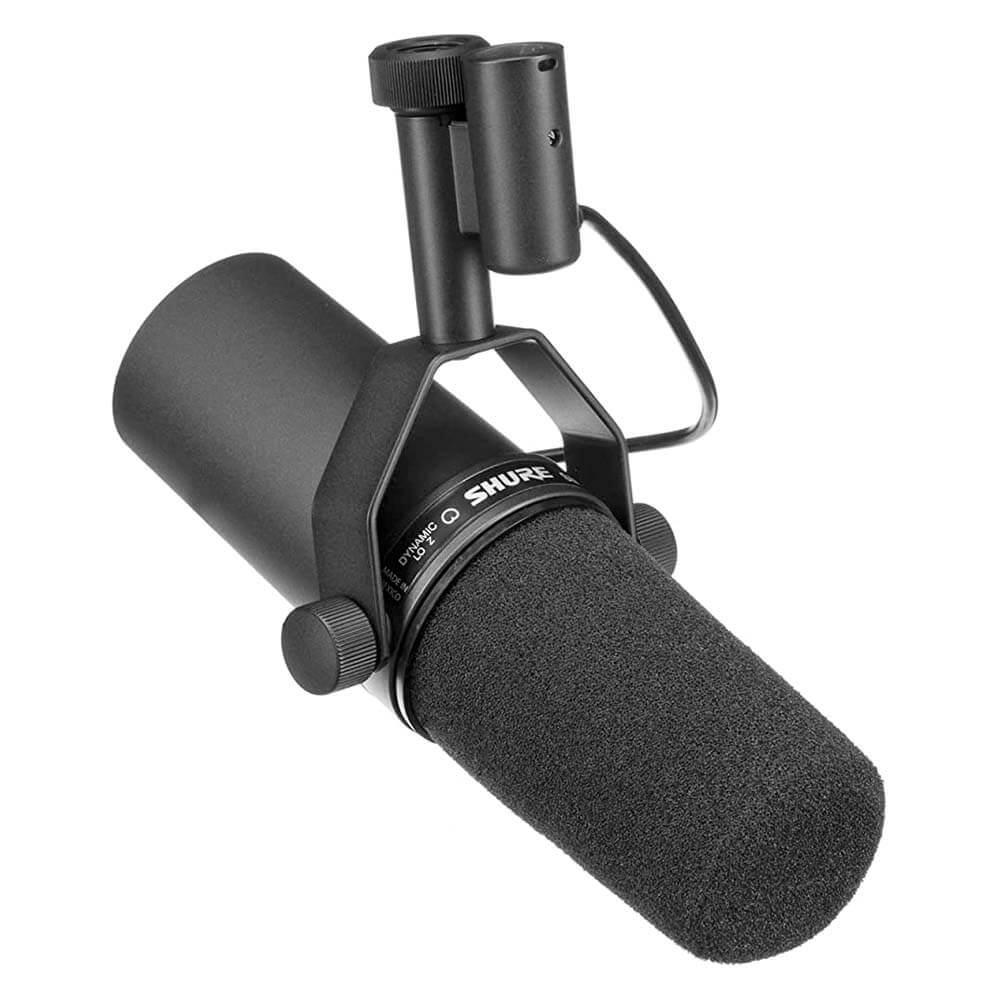
- Connection: 3-pin XLR (requires a preamp or audio interface)
- Type: Dynamic
- Polar pattern: Cardioid
- Cost: 395 euros
Looking for a high-end podcasting microphone? The Shure SM7b is a top choice with its clean and natural recordings.
Its advanced technology rejects electromagnetic hum and its internal "air suspension" shock isolation system eliminates mechanical noise transmission and the highly effective pop filter eliminates the need for additional protection against explosive breath sounds. We also like that you can fine-tune the bass rolloff and mid-range emphasis to suit your specific needs.
It's the most expensive podcasting microphone on our list, yet a great investment if you're looking for something top notch.
2. Rode PodMic
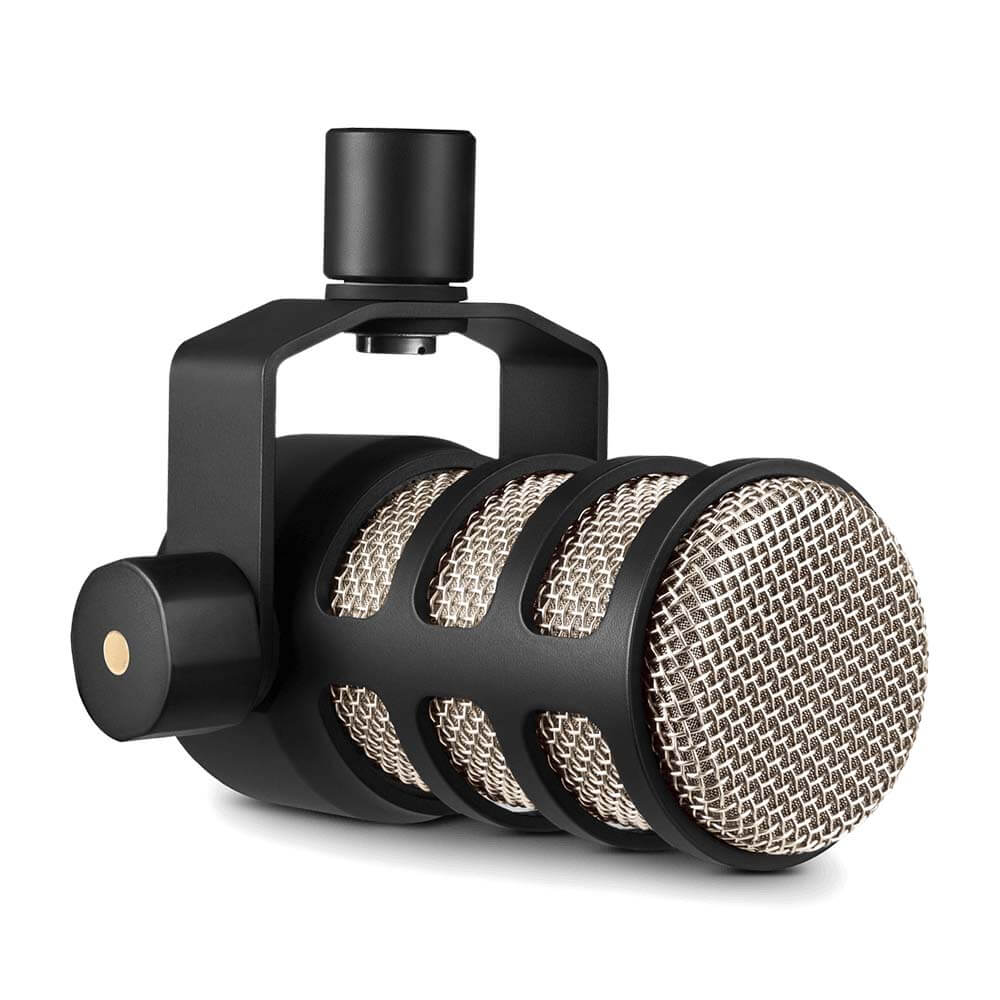
- Connection: XLR
- Type: Dynamic
- Polar pattern: Cardioid
- Cost: 115 euros
The Rode PodMic is the ideal microphone to take on the go. This dynamic mic is designed specifically for broadcast applications and its compact size makes it easy to use anywhere.
The sound quality is amazing, with a rich, full-bodied tone that captures every detail of your voice. The internal shock mount and pop filter eliminate unwanted noise. And the rugged construction ensures it can handle any recording situation.
Despite not having a USB port, the PodMic is super easy to set up - just plug it into your audio interface or mixer and start recording.
Want to find guests for your podcast?
Join our podcast directory. We'll connect you with dozens of subject matter experts.
3. Samson Q2U
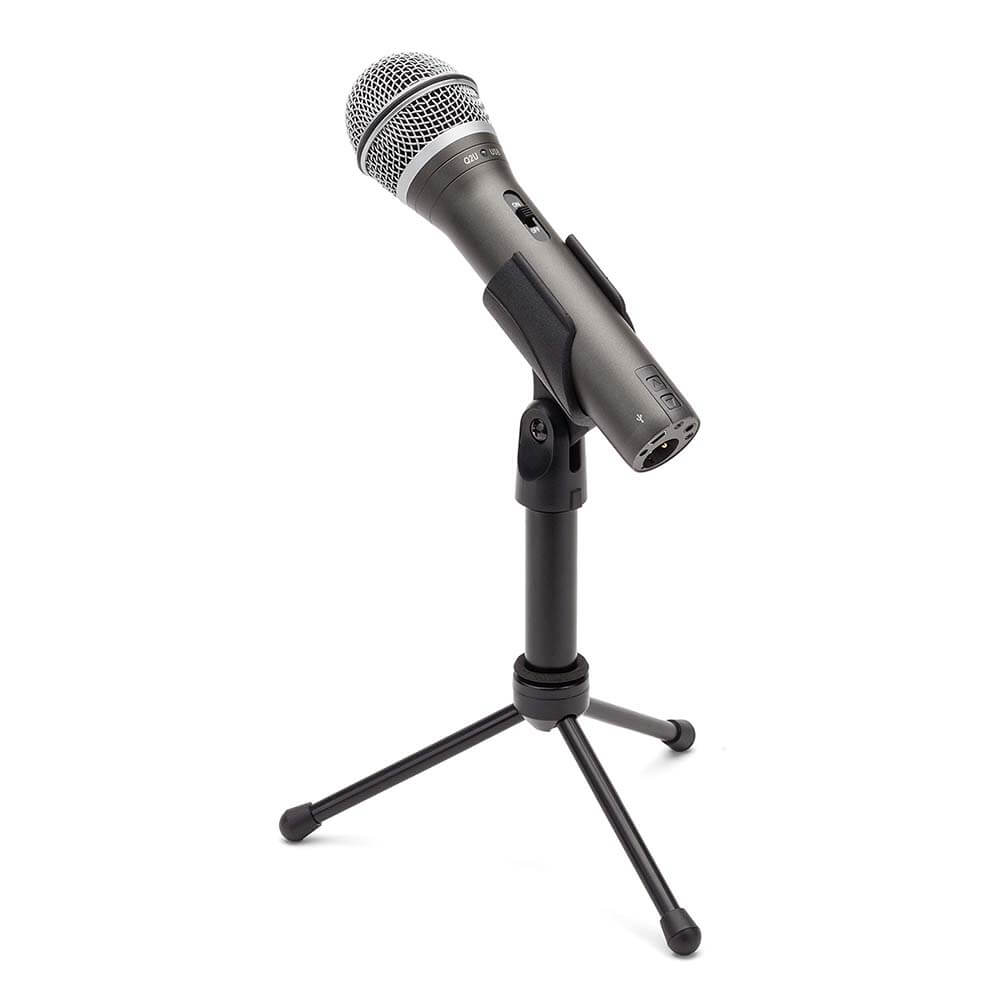
- Connection: USB or XLR
- Type: Dynamic
- Polar pattern: Cardioid
- Cost: 95 euros
The Samson Q2U is an exceptional microphone for podcasters. Like other USB/XLR microphones on our list, it can be used plugged into a computer's USB port or mixer's XLR input.
Its cardioid polar pattern is excellent for voice recording, and it features a built-in headphone jack for straightforward monitoring and a mute switch for taking breaks. It comes complete with a desk stand and pop filter — that's a full mic kit for just under 100 euros.
4. Shure MV7+
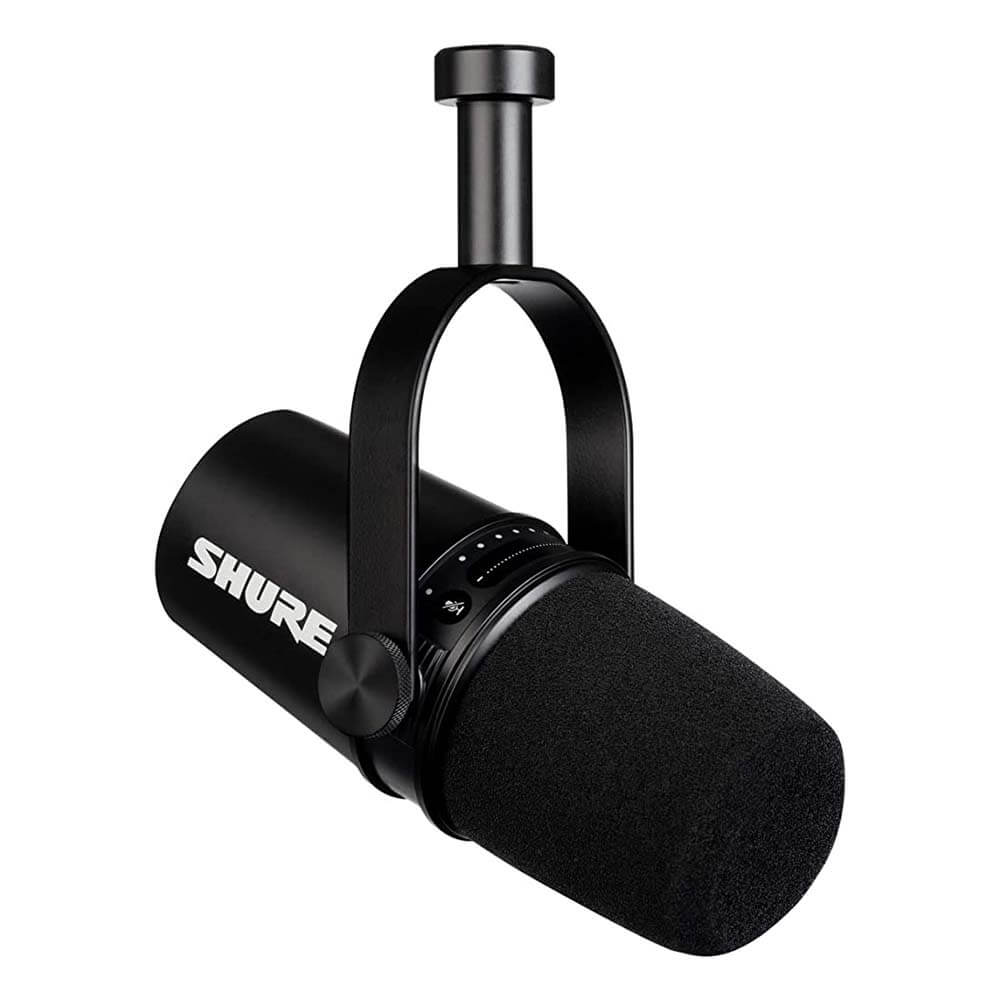
- Connection: USB or XLR
- Type: Dynamic
- Polar pattern: Cardioid
- Cost: 250 euros
The Shure MV7+ is an excellent microphone for podcasting. It features a built-in headphone jack for monitoring your recordings and a touch panel for controlling gain, mute, and headphone volume.
We like that you can use this microphone with the ShurePlus MOTIV app, which lets you fine-tune your recordings with EQ, compression, and limiting. This microphone is also great at isolating your voice from background noise thanks to its dynamic cardioid polar pattern.
5. Rode Procaster
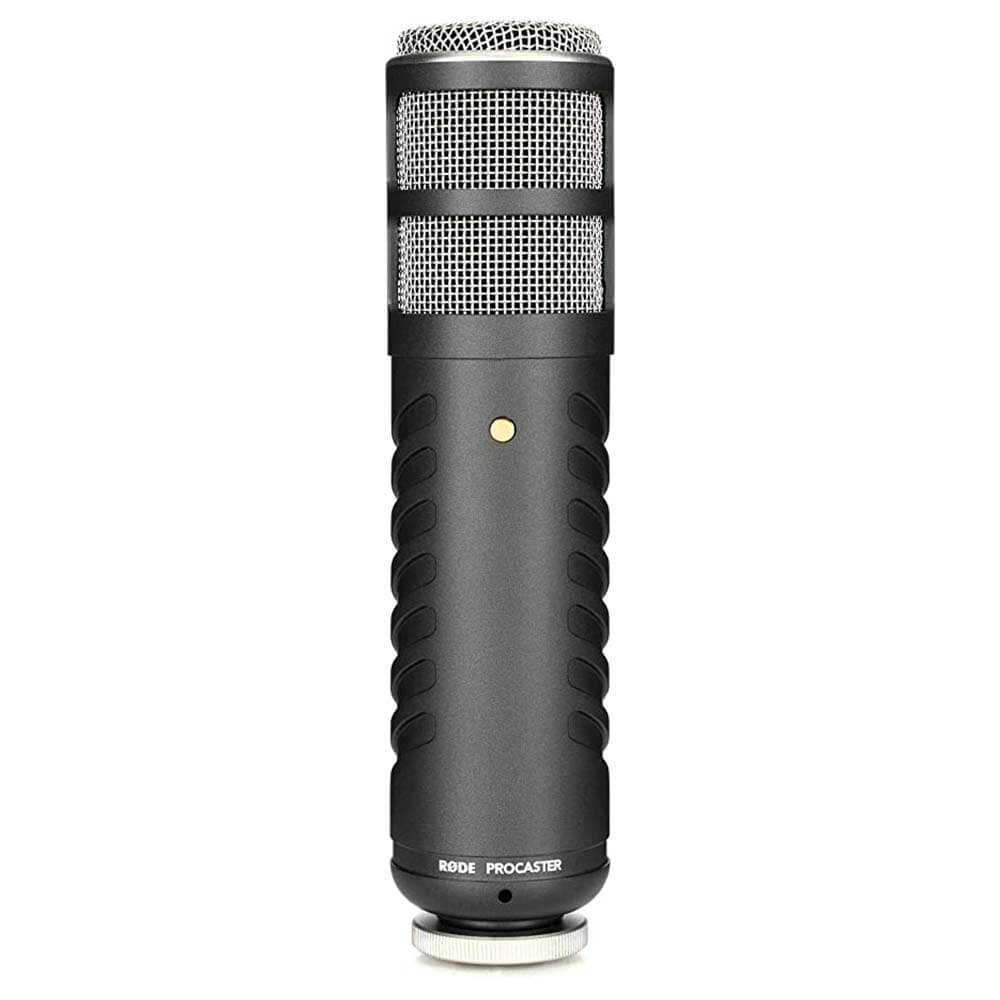
- Connection: XLR
- Type: Dynamic
- Polar pattern: Cardioid
- Cost: 180 euros
The Rode Procaster is a top-notch podcasting microphone with a sleek and professional design. Its dynamic capsule delivers excellent sound quality with minimal background noise. With a frequency response tailored for speech, this microphone will make you sound clear and crisp.
The Procaster is compatible with most mixers and interfaces, and it also has an internal pop filter to reduce plosives. It's a great choice for podcasters who value quality and durability in their equipment.
6. Audio-Technica ATR2100x‑USB
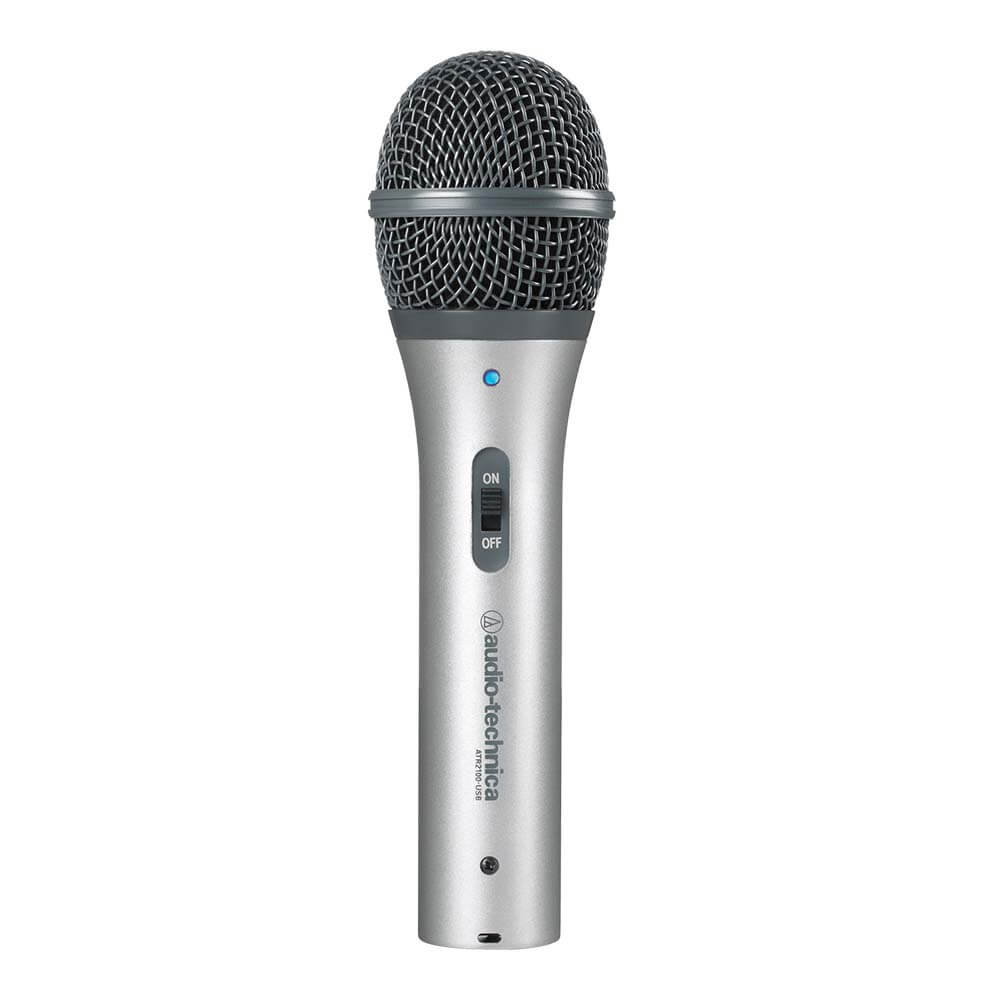
- Connection: USB or XLR
- Type: Dynamic
- Polar pattern: Cardioid
- Cost: 80-100 euros
The Audio-Technica ATR2100x‑USB is a plug-and-play microphone that, though it looks like a karaoke mic, is perfect for podcasting. It is a reliable choice for podcasters on a budget who want professional-quality sound.
Like most best podcasting microphones out there, it features a cardioid polar pattern that picks up sound from the front and reduces background noise, making it ideal for recording in noisy environments.
The ATR2100x‑USB also has a built-in headphone jack that allows you to monitor your recordings in real-time, as well as a mute button and volume control. Its dynamic range and frequency response make for clear and crisp audio recordings.
7. Audio-Technica AT2040
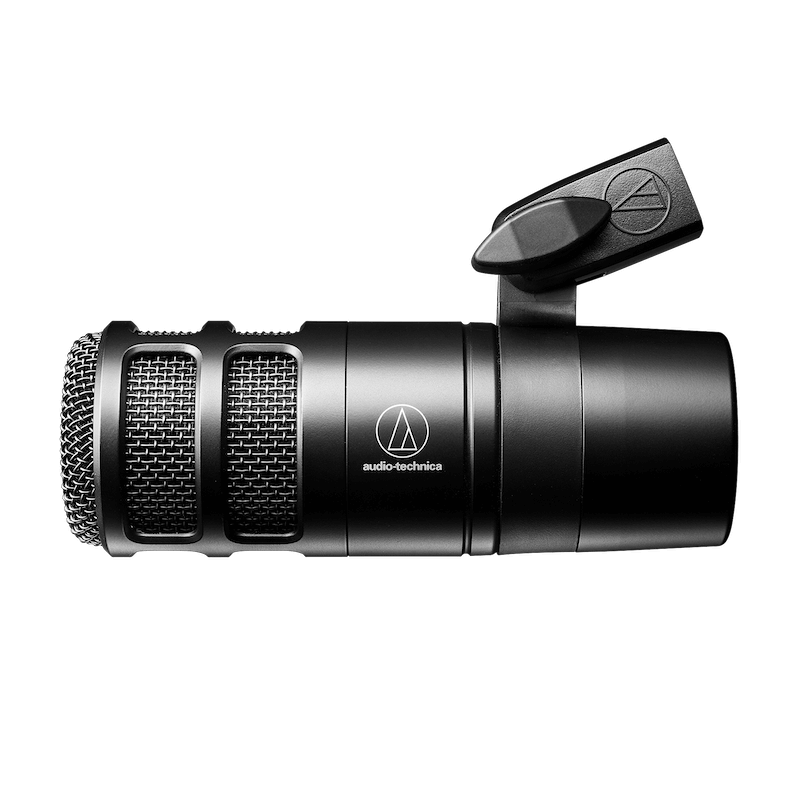
- Connection: XLR
- Type: Dynamic
- Polar pattern: Hypercardioid
- Cost: 100-120 euros
The Audio-Technica AT2040 is a professional dynamic microphone designed for podcasting. It delivers broadcast-quality sound with a warm, rich tone, making it a solid choice for podcasters who want clear and natural audio.
Its hypercardioid polar pattern focuses on your voice while blocking out background noise, making it ideal for recording in home studios or less-than-perfect environments. Unlike condenser microphones, the AT2040 doesn’t pick up every little sound, which helps maintain a clean recording.
Since it’s an XLR microphone, you’ll need an audio interface or mixer to use it. However, this also means better sound quality and more control over your audio setup.
Check out our additional resources for more tips and guides on podcasting:
